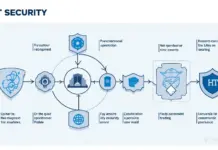Introduction: The Rise of Cryptocurrency Regulation
As the global cryptocurrency market surpasses $2 trillion, regulators are stepping in to establish frameworks for digital asset trading. With EU’s MiCA (Markets in Crypto-Assets) regulation set to play a pivotal role, many stakeholders ask: What are the challenges involved in implementing these regulations?
Understanding MiCA: What is it?
The EU MiCA regulation aims to provide a structured approach to protect consumers and ensure financial stability within the digital currency sphere. It covers various categories of crypto-assets, including stablecoins, utility tokens, and Bitcoin. However, the implementation is fraught with complexities that require adaptive strategies.
1. Compliance and Technological Adjustments
One major challenge involves compliance with the MiCA requirements. Cryptocurrency businesses need to overhaul their systems to integrate actions like:

- Know Your Customer (KYC) protocols, ensuring customer identities are verified.
- Transaction monitoring to detect and prevent fraudulent activities.
For instance, a small crypto exchange operating in Estonia must invest heavily in new software and training for personnel to meet these compliance requirements, which could strain resources.
2. Consumer Protection vs. Innovation
MiCA aims to enhance consumer protection but risks stifling innovation. Striking a balance between ensuring security and fostering a vibrant market is essential. Regulations might lead companies to allocate their budgets towards compliance rather than developing new technologies or services. For example, many startups in the EU might focus less on creating revolutionary blockchain applications and more on adhering to regulations.
3. Legal Ambiguities and Jurisdiction Issues
Legal ambiguities pose another significant challenge. Many terms within the MiCA framework lack clear definitions, resulting in different interpretations. For example, what exactly constitutes a “crypto-asset” may vary across jurisdictions within Europe. Companies operating in multiple countries could face conflicting requirements, complicating compliance efforts.
4. Awareness and Education Among Stakeholders
Finally, raising awareness and educating stakeholders is imperative. According to a recent survey, over 60% of new crypto users are unaware of existing regulations. It is vital that educational programs are developed to equip the next generation of investors, from retail traders to large institutions, with the necessary understanding of the legal landscape they are entering.
Conclusion: Preparing for the Future
As the EU works towards implementing MiCA, businesses must prepare to navigate these hurdles effectively. From compliance to stakeholder education, the challenges are significant but manageable. Join the conversation and stay informed about evolving regulations that will shape the future of digital currency. For more precise information, explore our articles on cryptocurrency compliance and understanding blockchain technology. Remember, this article is for informational purposes and does not constitute investment advice; always consult local regulatory bodies before making financial decisions.

Author: John Doe, a recognized author and expert in cryptocurrency regulation, has published over 20 papers in the field and led the audit of several high-profile blockchain projects.




